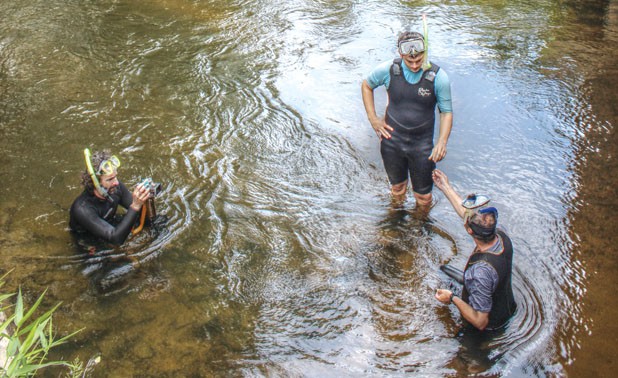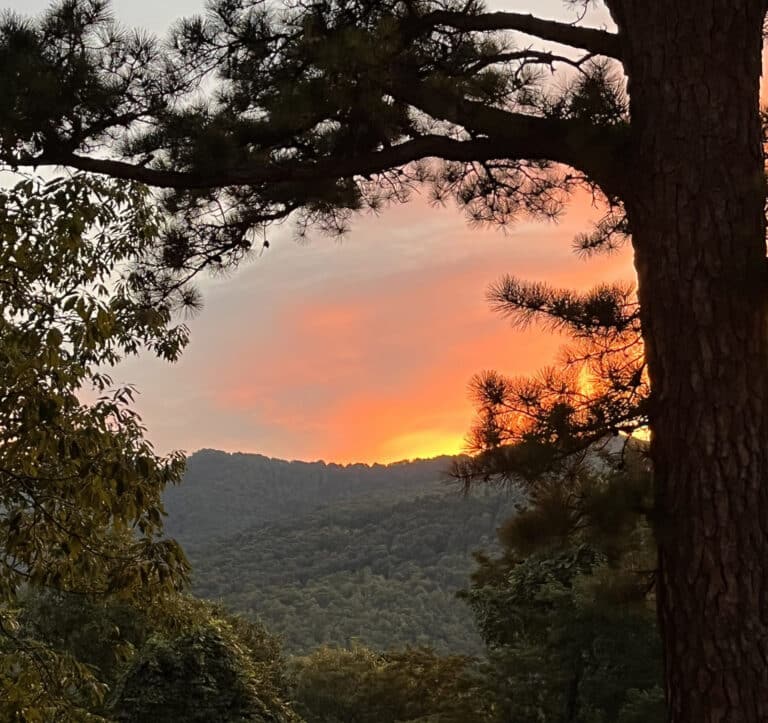Biologists evaluate mussels in the Little River.
“Is this the road here?” Gary Peeples asks as the van approaches a dirt road in the middle of a cornfield.
“Go just a little farther and there’s a pull off on the other side of the bridge,” John Fridell replies.
Peeples, a public affairs officer with the U.S Fish and Wildlife Service (FWS), pulls the van onto the grassy shoulder of a county road near the banks of North Carolina’s Little River. He and John Fridell, a FWS biologist, step out into the quiet valley.
A few months ago, the section of the river had been stocked with 30 mussels. Peeples and Fridell are hoping to locate some of those mussels and also get an idea of the health of the stream’s other species by doing an unofficial survey.
To do so, they slip into full-body wetsuits and strapped on dive masks, snorkels, and underwater cameras to get a fish-eye view of what the river is really like.
“Even if you’re out there fishing or paddling, you’re still looking at the water from above. But snorkeling gives you such an incredibly intimate look at the life of a river,” Peeples explains. “Fish are swimming around you, you see mussels and other aquatic life, and, really, you just become part of the river.”
One of the main species that indicates a healthy stream or river is the mussel, a small clam that once thrived in the rivers of western North Carolina. Abundant and diverse numbers of mussels suggests that the river is home to a variety of other aquatic wildlife.
“The well-being of the mussels reflects the well-being of the streams,” Peeples says. “The better the mussels are doing, the healthier the streams will be.”
Within minutes after entering the water, Fridell finds his first mussel: an Appalachian elktoe, which is one of eight species of mussels on the endangered list in North Carolina. The elktoe once lived in the majority of the rivers and larger creeks of the upper Tennessee River system in North Carolina. The species still survives in scattered pockets of suitable habitat in portions of the Little Tennessee, Pigeon, Mills, and Little River watersheds.
Snorkeling through the clear waters of the Little River, Fridell and Peeples scour the river bottom for the unmistakable sign of a mussel: two tiny holes in the sand and gravel that are the only visible sign. The two holes are used by the mussels to filter the water through their bodies.








